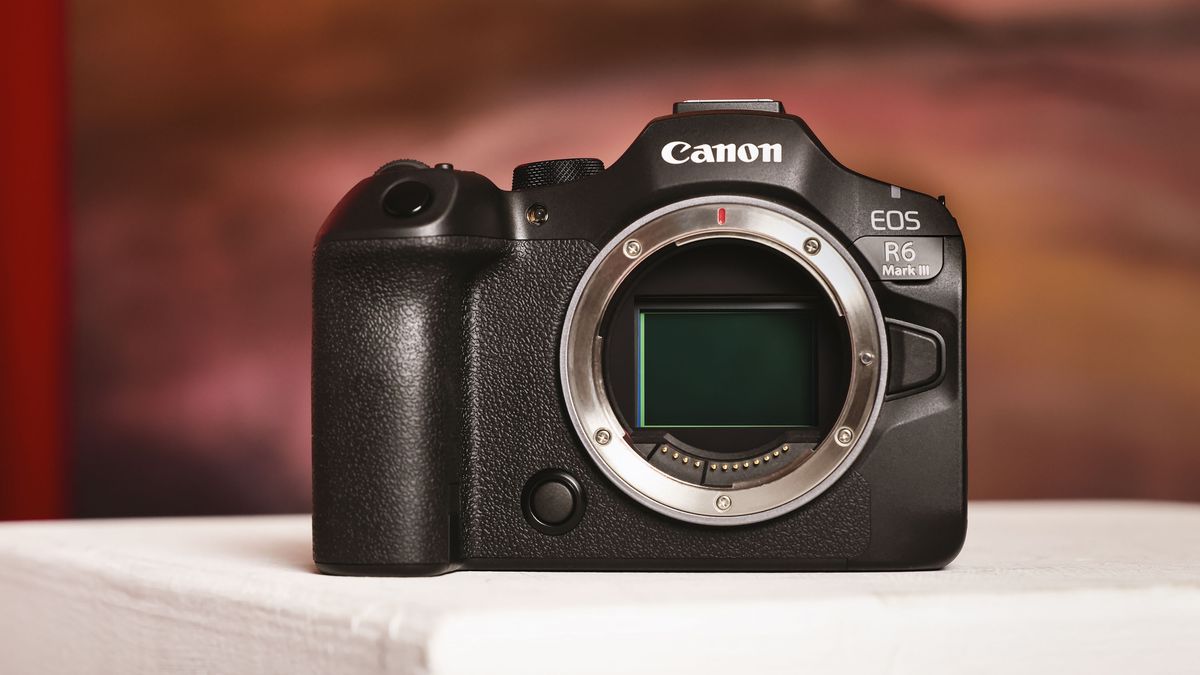Canon just barged into the mid-range full-frame hybrid camera arena with a new entry. The 32.5MP EOS R6 III is a dramatic improvement over the EOS R6 II thanks to the higher resolution, faster shooting speeds and better video specs. However, it comes at a relatively high price and lacks a stacked or partially stacked sensor, unlike other cameras in this category.
The new 32.5MP sensor provides a big boost in resolution compared to the R6 II's 24MP chip. At the same time, the R6 III offers higher shooting speeds of 40 fps in burst mode with the electronic shutter, or 12 fps with the mechanical or first-curtain shutter. It also supports 20 frames (a half second) of pre-shooting so you won't miss key moments for wildlife or sports shooting.
Canon
The R6 III uses Canon's fast and dependable Dual Pixel AF system and comes with the company's latest AI tracking algorithms. It can operate in fairly dim conditions down to -6 EV and should be more responsive with Canon's latest Digic X processor, pending our review. It offers subject tracking for people, animals and vehicles, along with an Auto mode that will pick one of those automatically. It also borrowed the "Register People Priority" feature from the R5 II, which lets you keep focus locked on specific subjects that you've previously memorized.
The biggest update for the R6 III, though, is with video. Thanks to the higher resolution sensor, it can now capture up to 7K 60 fps RAW light video, 7K 30 fps "open gate" video and 4K at up to 120 fps, all with Canon's C-Log2 and C-Log3 on tap. There's a dizzying array of other video formats available (12 pages worth in the specs), with HEVC S, AVC-S, RAW, RAW Light and others, at resolutions up to 7K. All the AF subject detection features are available (vehicles, animals and people), and Canon is typically among the best for video AF in terms of speed and accuracy.
Canon
Nobody expects any radical design changes in a Canon camera (the company tried that with the EOS R and it really didn't work), so the R6 III kept the last model's tried and true form factor. That includes two adjustment dials on the top and one on the rear, along with a joystick, photo/video selector, mode dial and a good assortment of programmable buttons.
The rear display flips out as you'd expect for vlogging, but it doesn't tilt like Panasonic's S1 II — so it may obstruct the mic or headphone jacks, and isn't as useful for low-angle photo shooting. The viewfinder has 3.69 million dots of resolution as before, the same as Sony's A7 IV but less than Panasonic's slightly more expensive Lumix S1 II. One big change is the addition of a CFexpress card slot that allows RAW video capture and faster burst speeds, along with an SD UHS II slot. The battery is the same as the one for EOS R5 II and allows up to 390 shots (CIPA rating) with the viewfinder enabled.
Canon
Other features include waveform monitoring that will be much appreciated by pros, plus new focus speed algorithms borrowed from Canon's cinema cameras that offer "natural, professional" behavior, the company wrote. Inputs include 3.5mm mic and headphone jacks, along with high-speed USB-C and a full-sized HDMI port. In-body stabilization has been boosted slight from 8 to 8.5 stops, matching the latest Panasonic models.
Along with the EOS R6 III, Canon introduced some interesting new glass. The RF45mm F1.2 STM lens brings very high speeds and shallow depth of field to a much smaller and lighter .76 pound (346 gram) form factor — less than half the weight of Canon's RF 50mm f/1.2L USM lens. It's also shockingly cheap for an f/1.2 lens at $470.
The Canon EOS R6 III arrives later this month for $2,799 (body only) or $4,049 with the RF24-105 F4 L IS USM lens. That's a bit more than the Nikon's $2,500 Z6 III, which has a partially stacked but lower-resolution 24MP sensor. Panasonic's S1 II also has a partially stacked 24MP but can shoot at up to 70 fps and costs $3,200. Finally, Sony's A7 IV has a similar 33MP sensor but lacks the RAW video features of the R6 III.

 5 hours ago
7
5 hours ago
7









 English (US) ·
English (US) ·